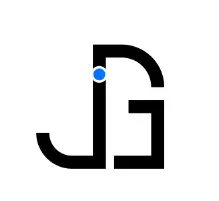According to the latest report of the Economic Times of India on October 29, India suddenly announced that it would set new standards to restrict the import of some leather products such as footwear and prevent cheap products from entering India. Until now, this policy haven’t related to Electronic Connectors, Eurostyle Terminal Block and Reflex Reflectors field.
The Ministry of Commerce, Industry and Domestic Trade Promotion Department (DPIIT) issued the "Quality Control Order Footwear made from Leather and other materials ,2020)" on October 27 to enforce inspection and standards for 10 types of leather shoes, including:
Leather safety boots and shoes
Canvas Shoes Rubber Sole
Canvas Boots Rubber Sole
Safety Rubber Canvas Boots for Miners
Leather safety footwear having direct mould rubber sole
Leather safety footwear with direct mould PVC sole
Sports footwear
High ankle tactical boots with PU-Rubber sole
Antiriot shoes
Derby shoes
According to the certification standards of the Indian Bureau of Standards (BIS), leather safety boots, leather shoes, sports shoes and riot shoes and other products which are in the leather products restriction list. That is, the quality of these leather products must pass the high quality standards of India before they can be exported to India. This actually has one consequence, that is, the future Indian market circulation, are high-priced, high-quality leather products.
India's dependence on China in the leather industry is still quite high. India's restrictions on imports of some leather and footwear products may have an impact on some Chinese companies, but the most affected is the Indian leather industry. Data show that India imported $453.12 million in leather products in fiscal year 2020, of which China accounted for 85% and orders amounted to $384.5 million.
Besides, India's Ministry of Finance issued a 42/2020- Customs announcement on November 11, To impose a 5% basic tariff on imported LCD and LED TV panel (Open Cell TV Panel) components (HS 8529), containing coated film (Chip on Film), printed circuit board (Printed Circuit Board Assembly,); and PCBA), batteries (Cell Glass Board/Substrate), Effective November 12 this year.
According to Reuters, India is currently strictly controlling the quality verification of electronic products imported from China, and the speed of approval has slowed, affecting the import of Apple's new IPHONE and products such as Mi.
From August this year, the Indian Standards Authority (BIS), which controls product quality, began to delay approval of electronic products such as smart phone, smart watches and so on from China. It used to take only about 15 days to pass the application, and now some take more than two months or more.
08 New Bill of Lading Requirements for Goods Exported to India
OOCL OOCL requirements relating to bills of lading for exports to India are summarized as follows:
1. Goods to India, one bill of lading can not use both own and non-own boxes;
2. Do not accept FCL/LCL, and do not accept more than one box consignee;
3. The consignor can not be an Indian company, and the consignor needs to show the full company name and address;
4. Consignee must be a local Indian company and need to display the full company name and address. Where the consignee is a To order or bank, then the notifier must be a local Indian company and must show the full company name and address; if the goods need to be transshipped through Calcutta to Nepal or Bhutan, the consignee may be accepted as a company at the final destination and a corresponding permanent account number (PAN);
5. Shall provide the permanent account number of the notifier (PAN); if the consignee and the notifier are both freight forwarders, they shall also provide the permanent account number of the consignee (PAN);
6. when the consignee or notifier is the real importer or shows the real importer information elsewhere in the bill of lading, the email address of the real importer, the import and export number (IEC) and the consumption tax identification number (GSTIN);
7.6 Digit HS Code must be provided for all exports to and transit through India When it is mixed with many kinds of goods, involving different HS Code, please develop and send cargo information according to the HS Code;
8. The destination column on all bills of lading is Indian goods. Please provide the total value in the Shipping Instruction remarks for declaration to the port of destination customs. The value information will not be shown on the bill of lading;
9. If the customer needs to arrange the goods to be transshipped from India to Nepal, the bill of lading should show the relevant terms of transshipment and provide a timely delivery guarantee;
10. When the goods are dangerous goods, the bill of lading does not show the terms of transshipment to the ICD Tughlakabad;
Transshipment to ICD Mulund is not accepted when the goods are Household good or Personal effect cargo, etc
12. The Customs and Excise Department of the port of destination does not accept Mobiles and mobile accessories, Footwear, Ladies Bags, Cosmetics, Welded Mesh, Food items, Candy &Milk Powder import into India,
13. Customs at the port of destination do not accept the import of the following goods to the shipper declares community as movies - and stuffing any items, Games & Game accessories, Production Move and Cooker.
Post time: Dec-28-2020





